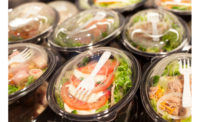Foodservice lunch, which accounts for a third of all foodservice traffic, posted consecutively steeper declines over the past six months, reports The NPD Group, Chicago. In the quarter ending June 2016, lunch visits declined by 4% compared to same quarter a year ago, the steepest decline of all main meal dayparts, according to NPD’s ongoing foodservice market research. The rise in employees working at home combined with an increase in online shopping and recent menu price hikes are main contributors to the softening of lunch traffic.
All restaurant segments, with the exception of traditional quick-service restaurants (QSRs), are losing visits, finds NPD. This is particularly true of casual dining and fast-casual (a quick-service category) restaurants where traffic was down in the quarter ending June compared to same quarter last year by 6% and 9%, respectively. Weekday foodservice lunch visits declined by 7%.
Foodservice lunch, especially weekday visits, has already been negatively impacted by a 24% increase over the last decade in the number of people working from home and an 8% increase over the last year in online shopping. And, recent menu price hikes have only worsened the situation. A pricing analysis done by NPD Group finds that the price point at which consumers are most satisfied and most likely to visit is when they feel it is “affordable to eat there often” and “good value for the money.” Average lunch eater checks in the quarter ending June 2016, which at some restaurant segments increased by as much as 5% compared to the same quarter a year ago, have moved upward beyond consumers’ “sweet spot” price, diminishing customer satisfaction and their intent to visit.
There has been aggressive dealing, like combo and value meal offerings at quick-service hamburger restaurants, and the dealing has prevented steeper lunch visit declines; however, NPD foodservice market research shows that only about a fourth of lunch customers took advantage of the deals. With deal traffic removed from the lunch check, consumers are paying, on average $8 dollars for lunch, which is higher than most want to pay for a quick-service lunch.
“Simply said, who can afford to go out lunch on a regular basis when checks have risen for some as much as they have recently,” says Bonnie Riggs, restaurant industry analyst. “Historically, foodservice lunch has been the occasion where consumers didn’t want to invest a lot time, money or energy into this meal. It’s apparent by the drop in lunch traffic that the current value proposition isn’t meeting these needs.”


